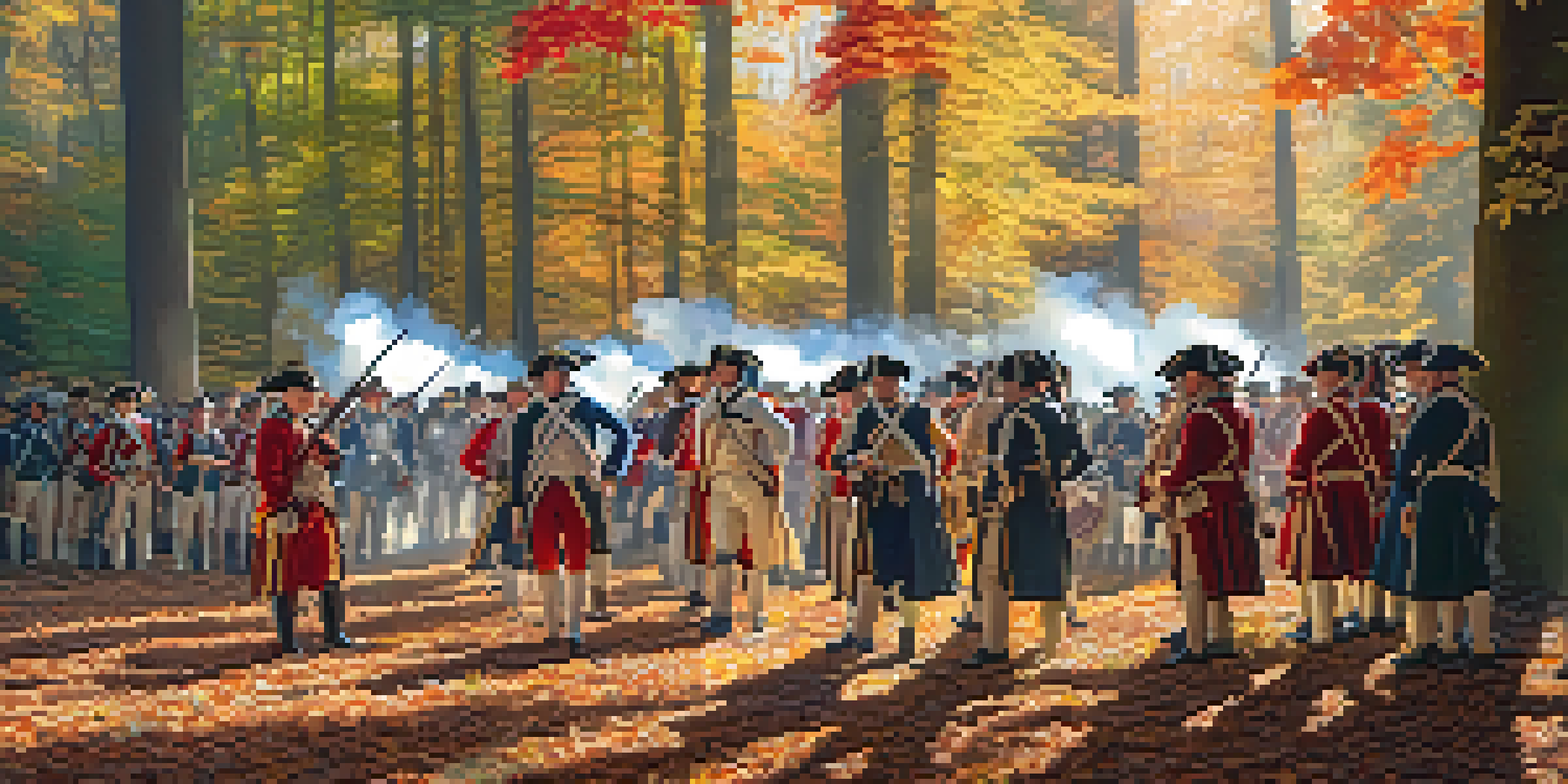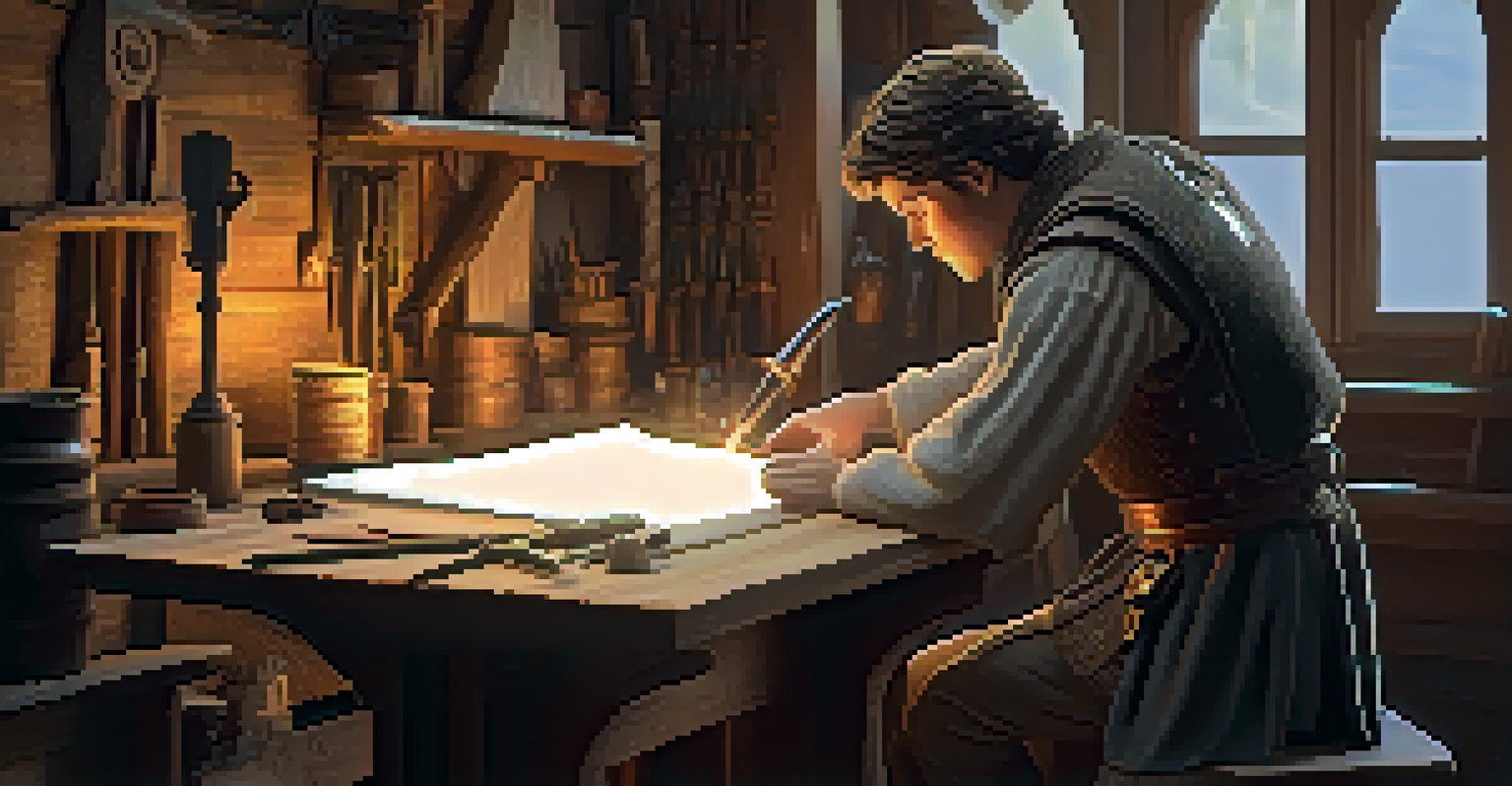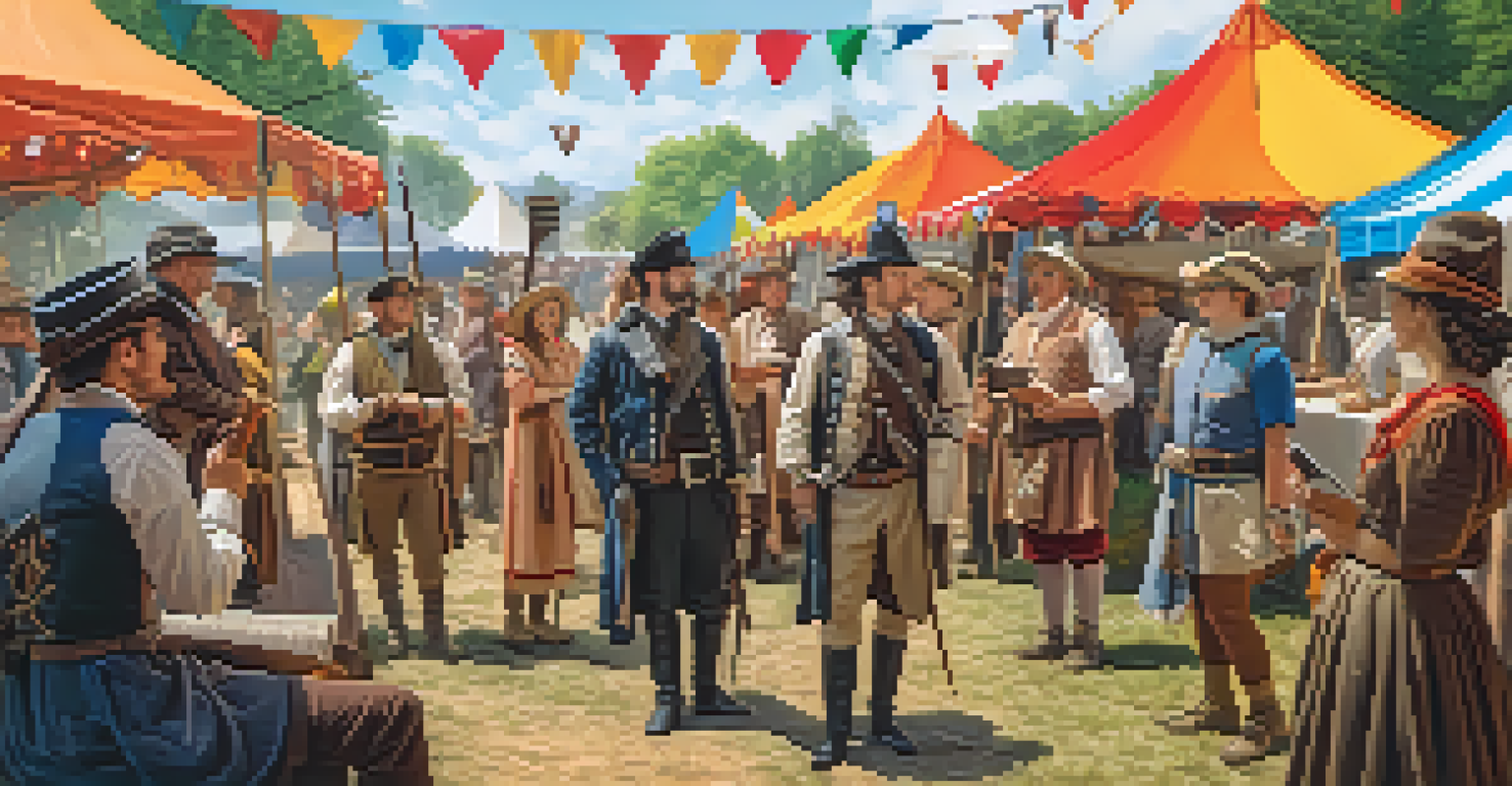Tech Innovations in Historical Reenactment: Pros and Cons

The Rise of Technology in Historical Reenactments
Historical reenactment has evolved significantly over the years, with technology playing a crucial role in its transformation. From virtual reality to 3D printing, tech innovations are making it easier for enthusiasts to create authentic experiences. This shift not only enhances the visual appeal but also allows participants to engage with history in ways that were previously unimaginable.
History is not a burden on the memory but an illumination of the soul.
One notable example is the use of augmented reality (AR) applications that provide additional context during reenactments. Imagine donning AR glasses that overlay historical facts or even animations of past events as you walk through a battlefield. This interactive element can deepen understanding and create a more immersive experience for both participants and spectators.
However, as we embrace these technologies, it’s essential to consider how they change the essence of reenactment. While tech can enhance realism, it may also detract from the raw, hands-on experience that many enthusiasts cherish. Balancing tradition with innovation is key to ensuring that history remains the focal point of these events.
Enhanced Authenticity: The Good Side of Tech
One of the most significant advantages of incorporating technology into historical reenactments is the potential for enhanced authenticity. For instance, digital archives provide access to rare artifacts, allowing reenactors to replicate clothing and equipment with precision. This level of detail can transform a reenactment from a simple performance into a rich, educational experience that honors the past.

3D printing has also revolutionized how reenactors create props and costumes. Instead of relying solely on traditional crafting methods, enthusiasts can design and produce accurate replicas of historical items in a fraction of the time. This not only saves resources but also opens up new avenues for creativity and expression within the community.
Tech Enhances Historical Authenticity
Incorporating technology like 3D printing and digital archives allows reenactors to create more accurate and detailed representations of historical events.
Moreover, technology can bridge gaps in historical knowledge, enabling a more comprehensive understanding of events. Through simulations and interactive exhibits, participants gain insights into the complexities of history that books alone may not convey. This multifaceted approach keeps history alive and relevant for new generations.
Challenges of Integrating Technology in Reenactments
Despite the benefits, integrating technology into historical reenactments comes with its challenges. For one, there’s the question of accessibility; not all reenactors can afford the latest gadgets or high-tech equipment. This disparity can lead to divisions within the community and create an uneven playing field, where only those with financial means can fully participate.
Technology is best when it brings people together.
Additionally, there’s the risk of over-reliance on technology, which can diminish the traditional skills that have been passed down through generations. For instance, if reenactors focus solely on using apps and devices, they might neglect the importance of craftsmanship and hands-on learning. This could lead to a loss of invaluable skills that contribute to the authenticity of reenactments.
Furthermore, the presence of technology can sometimes distract from the immersive experience that reenactors strive to create. If participants are preoccupied with their devices, the connection to history can become diluted. Striking a balance where technology enhances rather than overshadows the reenactment is crucial for maintaining the integrity of these historical portrayals.
Community Reactions to Tech Innovations
The introduction of technology in historical reenactments has sparked diverse reactions within the community. Some enthusiasts enthusiastically embrace these innovations, viewing them as essential tools for education and engagement. They argue that technology can attract younger audiences, ensuring the survival of reenactment traditions in an increasingly digital world.
Conversely, there are those who feel that the use of technology undermines the authenticity of reenactments. They argue that relying too much on gadgets detracts from the spirit of reenactment, which is rooted in hands-on experiences and genuine connections to the past. This debate often leads to heated discussions at events and online forums, highlighting the varying perspectives within the community.
Community Divided on Tech Use
Reenactors have mixed feelings about technology in their activities, with some embracing it for engagement while others worry it undermines authenticity.
Ultimately, the community's response to tech innovations will shape the future of historical reenactments. By fostering open dialogue and collaboration, reenactors can work together to find common ground, ensuring that technology complements rather than replaces traditional methods.
Educational Benefits of Technology in Reenactments
One of the standout benefits of integrating technology into historical reenactments is its potential as an educational tool. For instance, virtual reality experiences can transport participants back in time, allowing them to witness historical events firsthand. This immersive learning approach can be far more impactful than traditional classroom settings, making history come alive in a truly unique way.
Moreover, tech innovations can cater to diverse learning styles. Some individuals grasp concepts better through visual aids, while others may benefit from interactive experiences. By incorporating various technological elements, reenactors can create a more inclusive environment that accommodates different learning preferences, ultimately enhancing the educational value of these events.
Additionally, technology can facilitate collaboration with schools and educational institutions. Reenactment groups can partner with educators to develop programs that combine hands-on activities with digital resources, reaching a wider audience. This collaboration not only enriches students' understanding of history but also fosters a greater appreciation for the craftsmanship involved in reenactments.
The Role of Social Media in Historical Reenactments
In today's digital age, social media has become a powerful tool for historical reenactment communities. Platforms like Instagram and Facebook allow reenactors to share their experiences, showcase their work, and connect with like-minded individuals across the globe. This increased visibility can help grow interest in historical reenactments and attract new participants to the community.
Social media also provides a platform for educational content, with reenactors sharing insights about the history behind their portrayals. This can spark discussions and encourage followers to learn more about the events and figures being represented. By leveraging these platforms, reenactors can turn casual observers into engaged learners, fostering a deeper understanding of history.
Future Trends Embrace Innovation
Advancements such as AI and wearable tech promise to transform reenactments, enhancing both engagement and educational experiences while preserving core traditions.
However, the reliance on social media can also present challenges. The pressure to maintain an online presence and curate ‘perfect’ posts can lead to burnout for some reenactors. It's essential for individuals to find a balance between sharing their passion for history online and enjoying the authentic experiences that brought them to reenactment in the first place.
Future Trends in Tech and Historical Reenactment
As technology continues to advance, the future of historical reenactment looks promising yet complex. Innovations such as artificial intelligence (AI) could revolutionize how reenactors research and portray historical figures. Imagine AI algorithms analyzing historical texts to suggest more accurate interpretations of characters based on a wealth of data—a fascinating prospect for any reenactor.
Additionally, wearable technology could enhance the reenactment experience by providing real-time feedback on performance or historical accuracy. This could lead to more dynamic and engaging events, where participants not only perform but also learn and adapt in real-time. Such developments could usher in a new era of reenactment that prioritizes both engagement and education.

However, as we explore these new trends, it’s vital to stay rooted in the community’s core values. As we embrace innovation, we must also remember the importance of preserving the skills, stories, and traditions that define historical reenactment. Balancing the excitement of new technologies with the richness of historical understanding will be key to navigating the future.